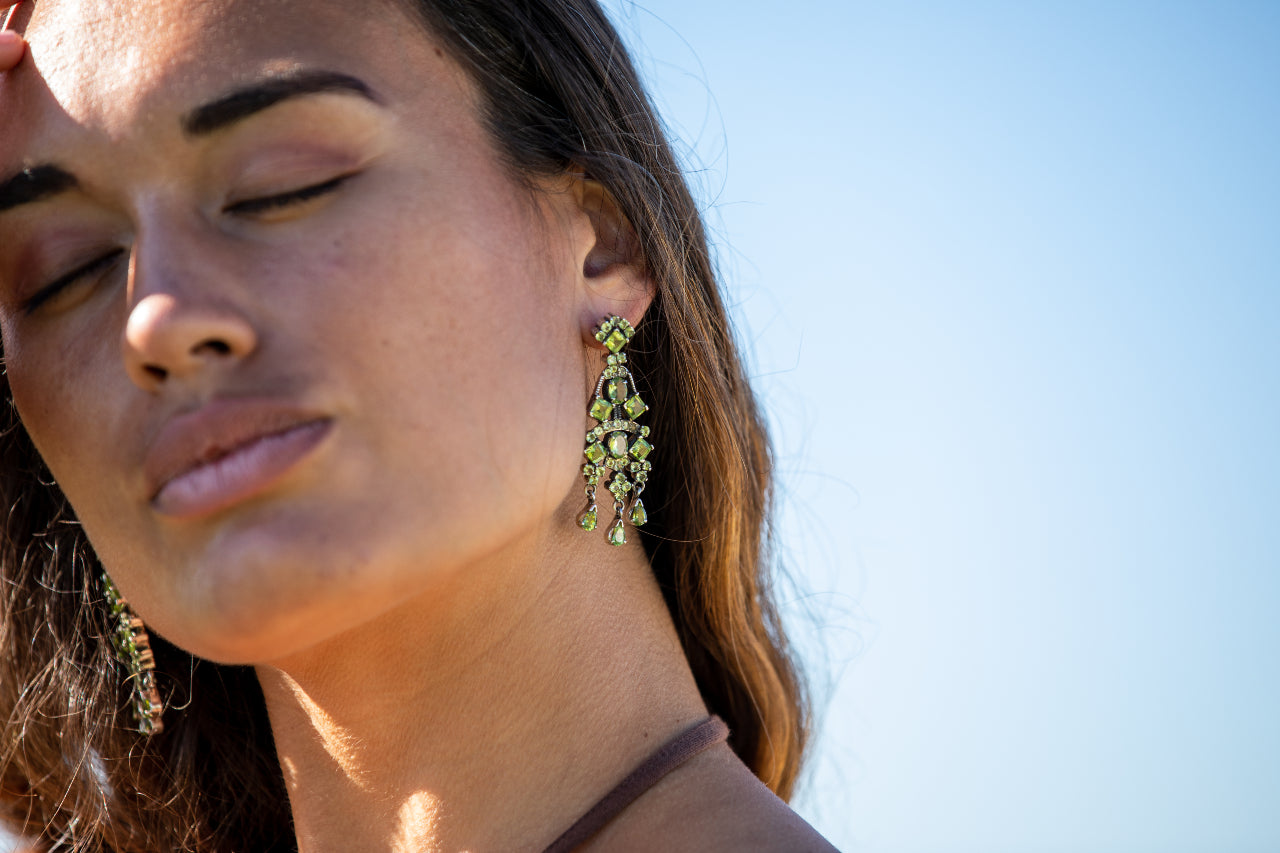Peridot - History, Facts & Fiction

Peridot has some unique properties and a truly fascinating history stretching back over 4,000 years.
Ancient civilisation worshipped this visually striking stone and it is mentioned in the Bible several times, though by its original name, Chrysolite. Some of the earliest Peridots were mined by the Ancient Egyptians on an island in the Red Sea, known as Topazios, now referred to as St Johns Island. Thinking the gem was invisible in sunlight the men worked at night believing it absorbed the suns rays during the day and only released its colour at night. (Incidentally, Peridots have no relationship to Topaz, they are two entirely different stones.)
Green - The rarest of gemstone colours.
Peridot has been confused with other gemstones over the centuries, most notably Emeralds, a little unusual considering the two are very different tones of green! However Cleopatra, whose favourite gem was Emerald, is thought to have had many Peridots in her collection, believing them to be Emeralds. It has also been confused with Chrome Diopside, Chrome Tourmaline, Demantoid Garnet, Moldavite and Green Zircon but none of these gems come close to the brilliant golden green colour only Peridot displays.
Folklore, myths and magic.
Due to its long association with the sun it has been used by crystal healers to drive away darkness and increase a feeling of wellbeing, peace and self-worth. It was also believed to be able to ward off evil spirits and bring good luck, with many ancient soldiers setting their swords with Peridots in the belief they would be protected and victorious on the battle field.
Isn't Mother Nature truly amazing?
Peridots may have a long and interesting history but it doesn't stop there, this gem has one of the most fascinating set of facts. It's one of a very few gems that only come in one colour, this is due to its chemical composition which includes iron and not impurities within the stone. Most gemstones like Sapphires, Tourmalines and Zircons have a wide colour range depending on which impurities are present. Take the impurities out of Sapphire and it's still Sapphire, take iron out of Peridot and its no longer Peridot.
It is also one of only two stones that doesn't form in the Earths crust but rather further down in the mantle. Diamonds and Peridots are created between 20 to 120 miles below the Earths surface and form in magma, and only surfaces during volcanic activity. Peridots are also extra-terrestrial and have been found in meteorites that have crashed to earth over the centuries.
As for its amazing, sparkly, almost florescent appearance, that is due to other unusual and rare qualities. There are a few scientific names here we need to use to explain all its unique features, firstly is is mildly pleochroic, meaning it is possible to see different colours when viewed from different angles, hence the flashes of gold along with the brilliant green. It is also has high birefringence which causes it to bend light as it enters the stone, this along with a strong cleavage makes it extremely difficult to cut and the lapidarist needs to take extreme care with the angle of the facets not to loose the colour or for the stone to shatter. Plus, one of its most stunning qualities, it has a phenomenal double refraction which means when you look at it you see two of each of the pavilion facets, hence that incredible sparkle!
Bigger is not always better.
Many people think bigger is always better when it comes to gemstones but Peridots rarely come in larger sizes. Gemologists get very excited when they see gems over 3 or 4 carats, the largest size usually found with minimal inclusions would be around 1 carat, anything over this is likely to have needle-like inclusions of silica.
And the name?
So, is it 'pear-a-doe' or 'per-i-dot'? Well it seems both pronunciations are acceptable. The word has French origins, which would make the 't' silent but for centuries the British have pronounced the 't' so it's entirely up to you!





